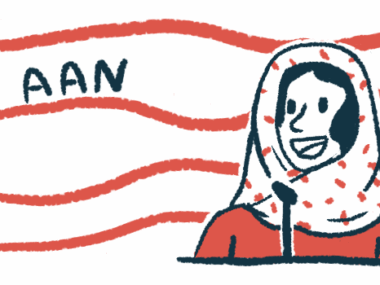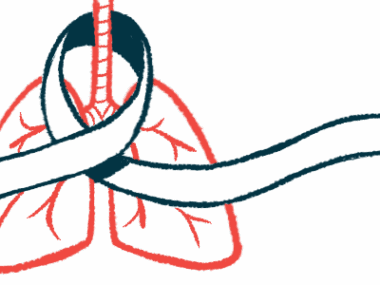Prevalence, incidence of sarcoidosis in Norway rose over 30 years
Increases more pronounced among men, with more aggressive forms of disease
Written by |

The prevalence of sarcoidosis, or the proportion of people with the condition in a population, has roughly doubled over the past 30 years in a region in Norway, a large population-based study shows, and the incidence of sarcoidosis, that is, the number of new cases within a given time, rose by about half.
These increases in prevalence and incidence were particularly pronounced among men and for more aggressive forms of sarcoidosis, which were associated with a higher risk of death.
“This is the most comprehensive study on sarcoidosis epidemiology [distribution and patterns] in Norway ever,” the study’s researchers wrote. “Our study supports the high incidence and prevalence rates reported in northern Europeans.” The study, “Prevalence, incidence, and mortality associated with sarcoidosis over three decades in the HUNT Study in Norway,” was published in Respiratory Medicine.
Sarcoidosis is an inflammatory disorder wherein clusters of immune cells called granulomas form, most commonly in the lungs and lymph nodes, but they can affect any organ, leading to a range of symptoms.
Löfgren syndrome, which is an acute but milder form of sarcoidosis, typically resolves without treatment, and is associated with favorable outcomes. But other forms of sarcoidosis may persist, cause irreversible organ damage, and, in some cases, increase the risk of death.
Studying changes in rates of sarcoidosis
Northern Europe, particularly the Scandinavian countries of Norway, Denmark, and Sweden, has the world’s highest rates of sarcoidosis. Here, researchers analyzed data from the first of three surveys of the HUNT Study, one of Norway’s largest population-based health surveys, to have more recent data on the disease’s prevalence, incidence, and mortality in that country. Launched in 1984, HUNT collected health information from more than 100,000 adults, aged 20 and older, in the Nord-Trøndelag region through four major surveys: HUNT1 (1984-1986), HUNT2 (1995-1997), HUNT3 (2006-2008), and HUNT4 (2017-2019).
Sarcoidosis cases were identified by linking each HUNT participant’s record from the first three studies to hospital records between Jan. 16, 1984 and Jan. 1, 2018.
Among 106,407 participants, there were 365 confirmed sarcoidosis cases, 310 of which had been diagnosed after the patients enrolled in the study and were included in the main analysis. For each of these 310 patients, the researchers randomly selected four age-, sex-, and survey-matched participants without sarcoidosis. All were followed until their date of death, emigration, or the end of the study on March 15, 2023, whichever occurred first. Of the 310 sarcoidosis patients, 249 (80.3%) had non-Löfgren syndrome, while 61 (19.7%) had Löfgren syndrome.
In the Löfgren syndrome group, 57.4% were men who were a mean age of 41.6 at their diagnosis. All had symptoms when first seen and lung function tests were normal. The non-Löfgren syndrome group had a higher proportion of men (61%) and were an older age at their diagnosis (mean, 52.7). Most didn’t have symptoms at their diagnosis, with lung involvement being the most common manifestation.
Non-Löfgren syndrome patients were more likely to have never smoked, be obese, less educated, and work as farmers than the matched healthy controls. Despite similar rates of simultaneous conditions between the two groups, the patients reported worse overall health.
Sarcoidosis prevalence increased from 0.54% in 1984 to 1.34% in 2018, a 2.5-fold rise. Age- and sex-adjusted incidence rates also rose by 54%, from 12.1 to 18.7 per 100,000 people.
For both prevalence and incidence, the most pronounced increases were seen among men and those with non-Löfgren syndrome.
What accounts for the increases?
The researcher surmised that the increased use of imaging techniques, such as CT scans, along with greater disease awareness, may have contributed to the rise in new diagnosed cases. The consistently higher incidence seen in men during the study may also reflect differences in genetic susceptibility or environmental exposures, although the exact reasons were unclear.
A mortality analysis, based on a mean follow-up of 18.5 years, showed that 31% of sarcoidosis patients and 25.2% of their matched disease-free participants died. People with non-Löfgren syndrome had a more than twofold higher risk of death relative to matched controls. The risk of death for those with Löfgren syndrome was comparable to the matched participants. Age, sex, smoking, and body mass index, which is a ratio of height and weight, were all significant predictors of mortality of all causes.
“Sarcoidosis incidence and prevalence rates in Norway are increased, and mortality rates are higher in [non-Löfgren syndrome] compared to the general population,” the researchers wrote. “The severity of [non-Löfgren syndrome] requires a complex explanation, which might lie in a crossing point between disease [profiles], lifestyle factors, exposure, and genetics.”






